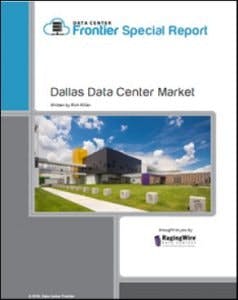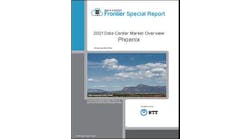Dallas-Fort Worth Data Center Market Draws Outside Businesses
We continue our series of stories on the leading geographic markets for data center space. Data Center Frontier is partnering with DatacenterHawk to provide in-depth market reports on each city we profile. This time, we revisit the Dallas/Fort Worth Data Center Market, which is continuing to experience a data center boom. The following is the last post in a four-part series, and explores the business environment of the Dallas/Fort Worth Texas data center market.
Download the full report.
Business Environment
Demand in the DFW market often originates from companies with a large presence in the area. However, many companies outside the area evaluating the DFW Texas data center market find it appealing. Data center users find the Dallas/Fort Worth market attractive for a variety of factors. Here’s an overview:
Connectivity
Multiple carriers’ fiber networks blanket the DFW Metroplex connected to a robust last-mile infrastructure. Alpheus (a regional fiber provider based in Texas), CenturyLink, Cogent, EarthLink, FiberLight (another regional player based in Atlanta, GA), Level 3, Sprint, Verizon, Windstream, and XO all serve the Metroplex. Long-haul fiber from multiple carriers connect the urban centers of both Ft. Worth and Dallas. Telecom giant AT&T relocated their world headquarters to downtown Dallas in 2008 and the company’s long-haul fiber is prevalent in DFW. AT&T fiber runs through the Alliance Airport area (home to the new Facebook data center) south to downtown Fort Worth, then west to downtown Dallas, and winds up into the northern suburbs of Carrollton and Lewisville – an area with several large colocation data centers. To the east in Dallas’ northern suburbs of Richardson and Plano, enterprise-grade fiber infrastructure attracted the majority of DFW’s new data center construction in the past five years.
Power
Texas is unique in that it is decoupled from the interconnected power grids serving the eastern and western United States. Among the contiguous 48 states, Texas is the only one that has a standalone electric grid entirely within the state. This means that with few exceptions, Texas produces the electricity consumed within its borders and therefore is not subject to the Federal Power Act, a Depression-era law where the Federal Power Commission oversees all interstate electricity sales. The Electric Reliability Council of Texas (ERCOT), a nonprofit corporation governed by a board of directors and subject to oversight by the Public Utility Commission of Texas and the Texas Legislature, is responsible for managing 90% of the electricity in the state of Texas.
The State of Texas introduced competitive electric markets in 2002, creating a system where electric generation and supply is a retail business competing for customers while the transmission — often the incumbent owners of power lines — remains heavily regulated. The confluence of a competitive market, the abundance of in-state power sources (notably natural gas), and a standalone power grid have driven power costs in the Dallas/Fort Worth market down over the past few years. This low-cost power makes DFW more competitive, attracting both regional and national transactions.
On the renewable energy front, Texas has a growing supply of wind energy, which accounted for 18 percent of the electricity generated in Texas during 2017, up from 10 percent in 2015. The availability of renewable energy options is crucial to the DFW region’s aspirations to emerge as a player in hyperscale deals.
Due to its intermittent nature, wind energy can be challenging to integrate into power grids. Texas has some advantages on this front, as it has an abundant supply of natural gas plants, which can adjust their power output more quickly than coal-fired plants.
The Infomart Data Centers property in Dallas, one of the largest and most connected building in the Dallas data center market. (Photo: Infomart)
Disaster Risk
Despite being relatively free of natural disasters, new entrants to the Dallas/Fort Worth market can sometimes worry about tornado risk. In addition, small earthquakes that have rattled the market recently have raised safety concerns. Data center providers in DFW know to address these concerns by designing facilities that meet building codes and withstand seasonal bouts of high-powered winds.
Economic Development and Incentives
Texas legislators passed a bill in 2013 to eliminate taxes paid on qualifying hardware and software purchases for data centers. While the exemption does not cover local sales taxes on purchases, data center owners/operators/occupants are 100% exempt from the 6.25% state sales and use taxes for up to fifteen years on electricity consumption and equipment purchases. This exemption includes purchases of servers, generators, storage devices, software, and other systems necessary for data center operations. To qualify for an exemption, the data center must:
- Total 100,000 SF of gross building area
- Achieve a capital investment of $200+ million over a five-year period
- Create at least twenty permanent jobs for locals
- Pay wages equivalent to 120% of the national average
This Data Center Frontier series on the Dallas Data Center Market also covered the following topics for the region:
Download the full Data Center Frontier “Dallas Data Center Market” special report, courtesy of RagingWire Data Centers.
And for further coverage, check out Data Center Frontier’s page dedicated to the Dallas Data Center Market, that will provide the latest stats and info on this quickly growing area that is continuing to experience a data center boom.







